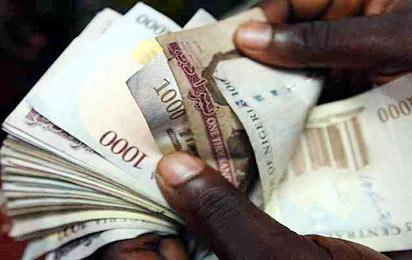
The gap between the savings and lending rates in the banking sector widened by 25.33 per cent in March, according to figures obtained from the Central Bank of Nigeria.
Latest figures obtained from the CBN on money market indicators revealed that savings deposit rate was 1.28 per cent in March while the maximum lending rate was 26.61 per cent.
It showed that in February, the savings rate was 1.28 per cent while lending rate was 26.61 per cent.
According to the figures, the savings rate stood at 1.25 per cent in January while lending rate was 30.73 per cent.
Experts have, however, said that the rates introduced in the in the market by the banking regulator would discourage people from saving and encourage those with the funds to look for other investments that would yield better returns.
But some experts have expressed concerns that the lending rate is too high for entrepreneurs to do business and could hinder them from making profits, asides other hostile economic challenges.
A former President, Association of National Accountants of Nigeria, Dr. Sam Nzekwe, noted that the CBN dropped the rates of savings, including fixed deposit rate, because it was trying to discourage people from saving their money but to invest them.
He said, “They were trying to do it so that people will not be saving. Instead of saving, government wants them to act on something that could generate income.
“So, when they have done that, people are no more interested to save except for people who have so much excess cash that they just want to save. Otherwise, most people are not saving again because the rate by which interest is calculated is very low.”
With an inflation rate of 16.82 per cent as of April, he said if a person was getting returns as low as 1.28 per cent on savings, the gap was going to be too wide and there would be saver loses.
He said, “Why do you now have to keep saving in naira and be suffering inflation at 16.82 per cent? You will see that there is no encouragement whatsoever to be saving money again.
“Some people now have resorted into buying land and properties instead of keeping the money in the bank because it is not going to yield anything.”
He also observed that due to high unemployment rate, many people had no job or income and had nothing so save.
Many who were working, he said, had little income, which had already been affected by inflation and huge expenses.
“The salary is not enough, so you don’t have any money to keep,” he said.
A professor of Capital Market and Chairman of the Chartered Institute of Bankers of Nigeria, Abuja Branch, Uche Uwaleke, said the huge gap between savings and lending rates in Nigeria would inhibit financial intermediation which was the primary function of commercial banks.
He said, “This is largely why the financial sector in Nigeria is disconnected from the real sectors of the economy as modest growth in the financial sector is not reflected in agriculture or manufacturing sectors.
“The huge cost of funds is discouraging a lot of SMEs from accessing working capital. The result is low-capacity utilization, which is partly responsible for the high rate of unemployment.
“Equally, very low savings rates discourage deposit mobilization and promote a lot of cash circulating outside the banking system. So, it is neither in the interest of a cash-light society nor financial inclusion.”
He added that, “On the flip side though, it has encouraged investments in other asset classes such as stocks and bonds.
“Be that as it may, the CBN should ensure that this huge gap be narrowed and that commercial banks do not flout regulations regarding the maximum limit between the standing lending rate, which is MPR plus one per cent and commercial banks lending rates.”
However, the Monetary Policy Committee of the CBN raised the benchmark interest rate from 11.5 per cent to 13 per cent during its last recent meeting in May.

